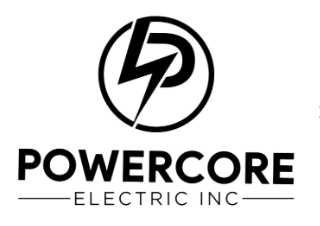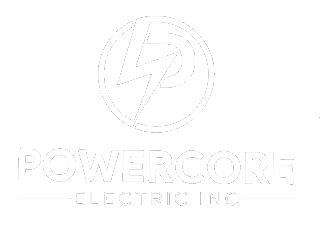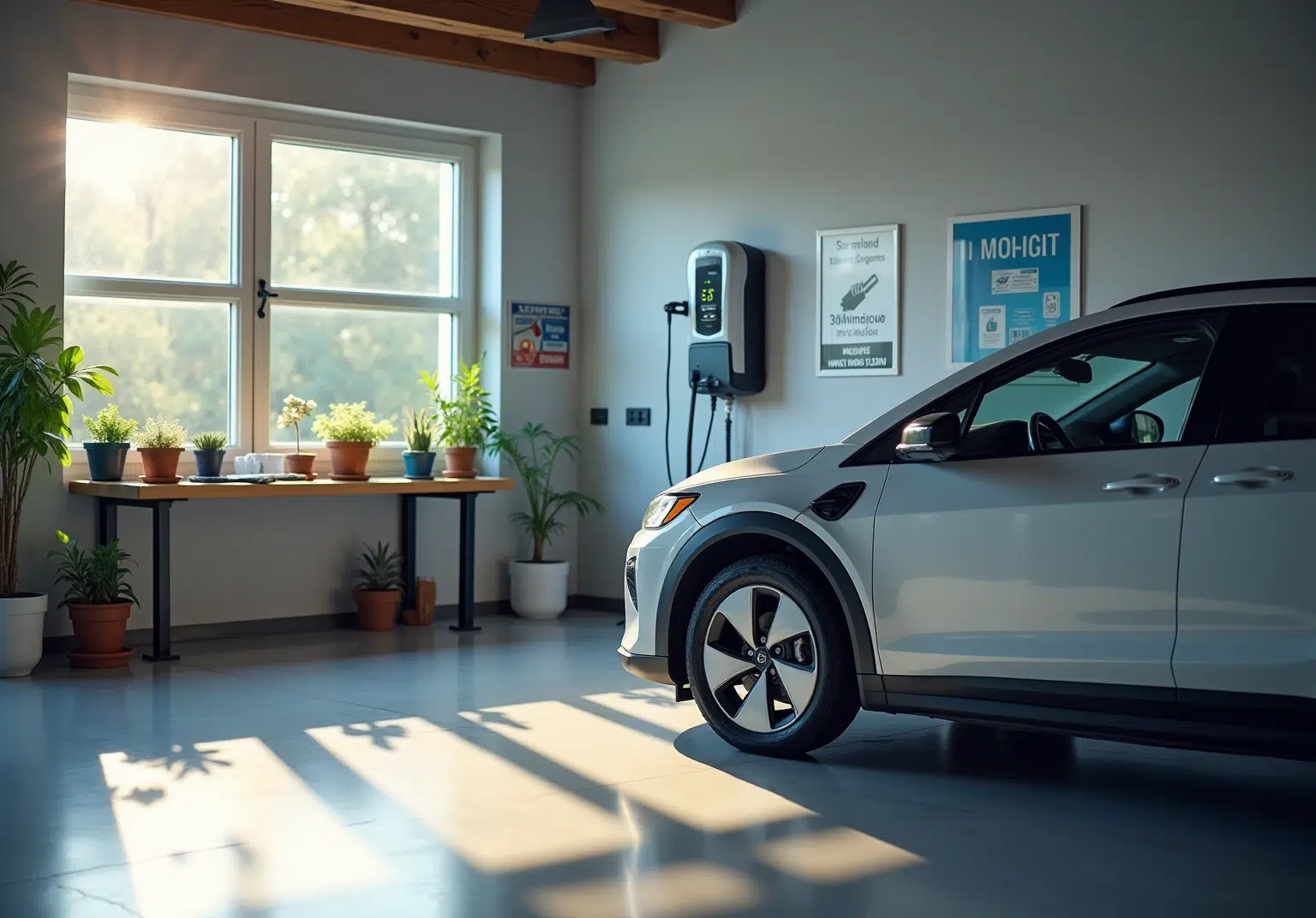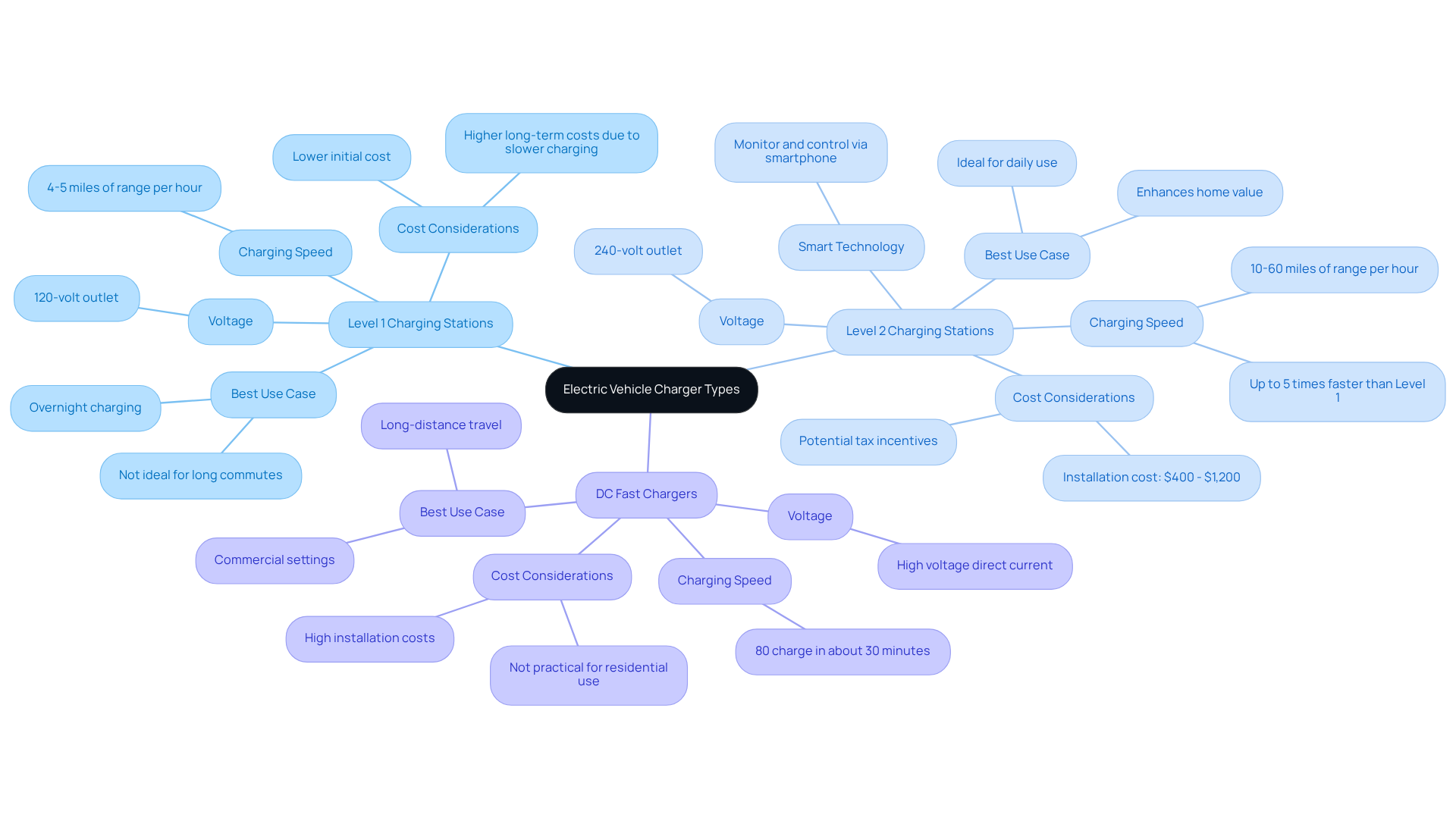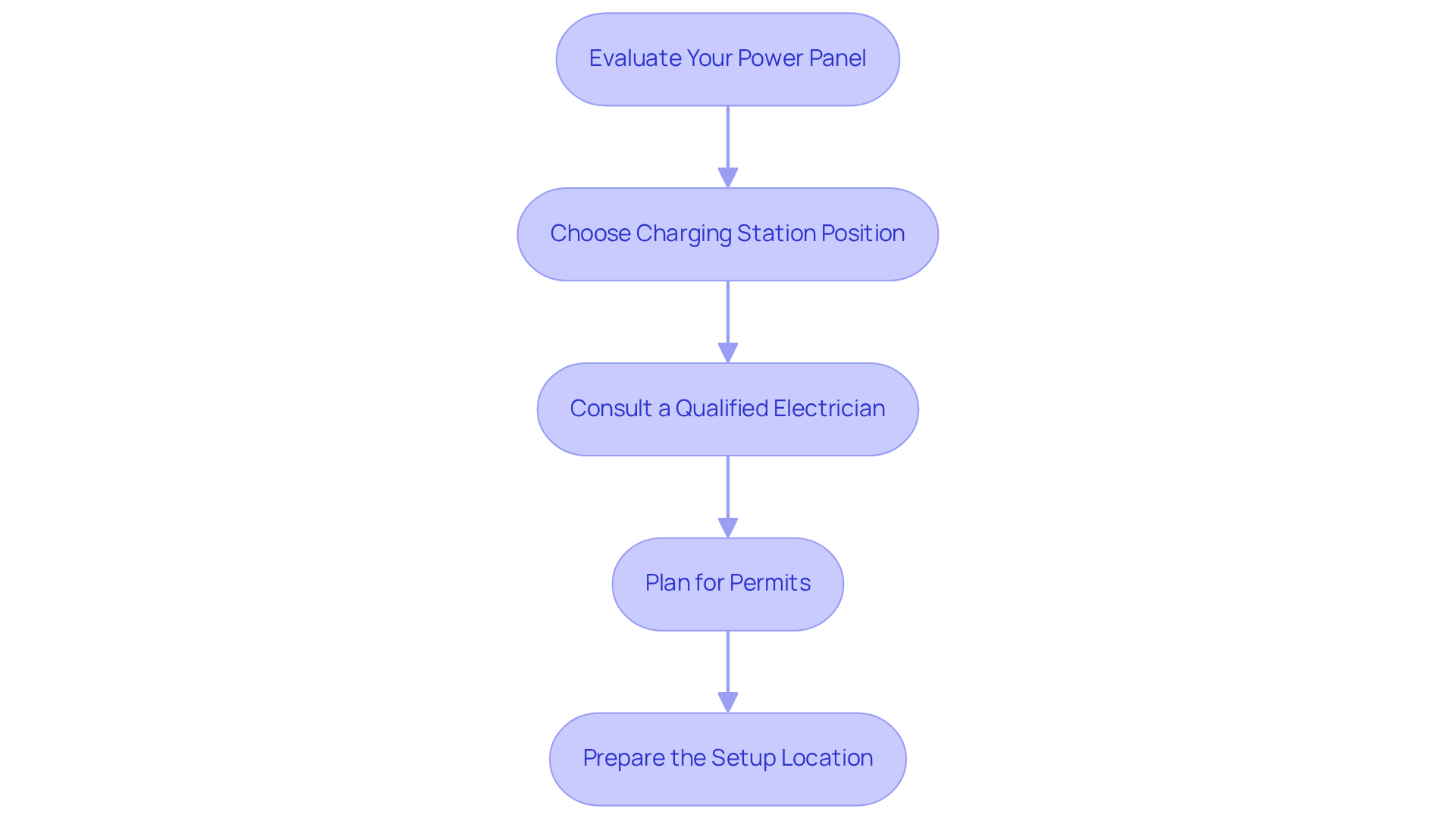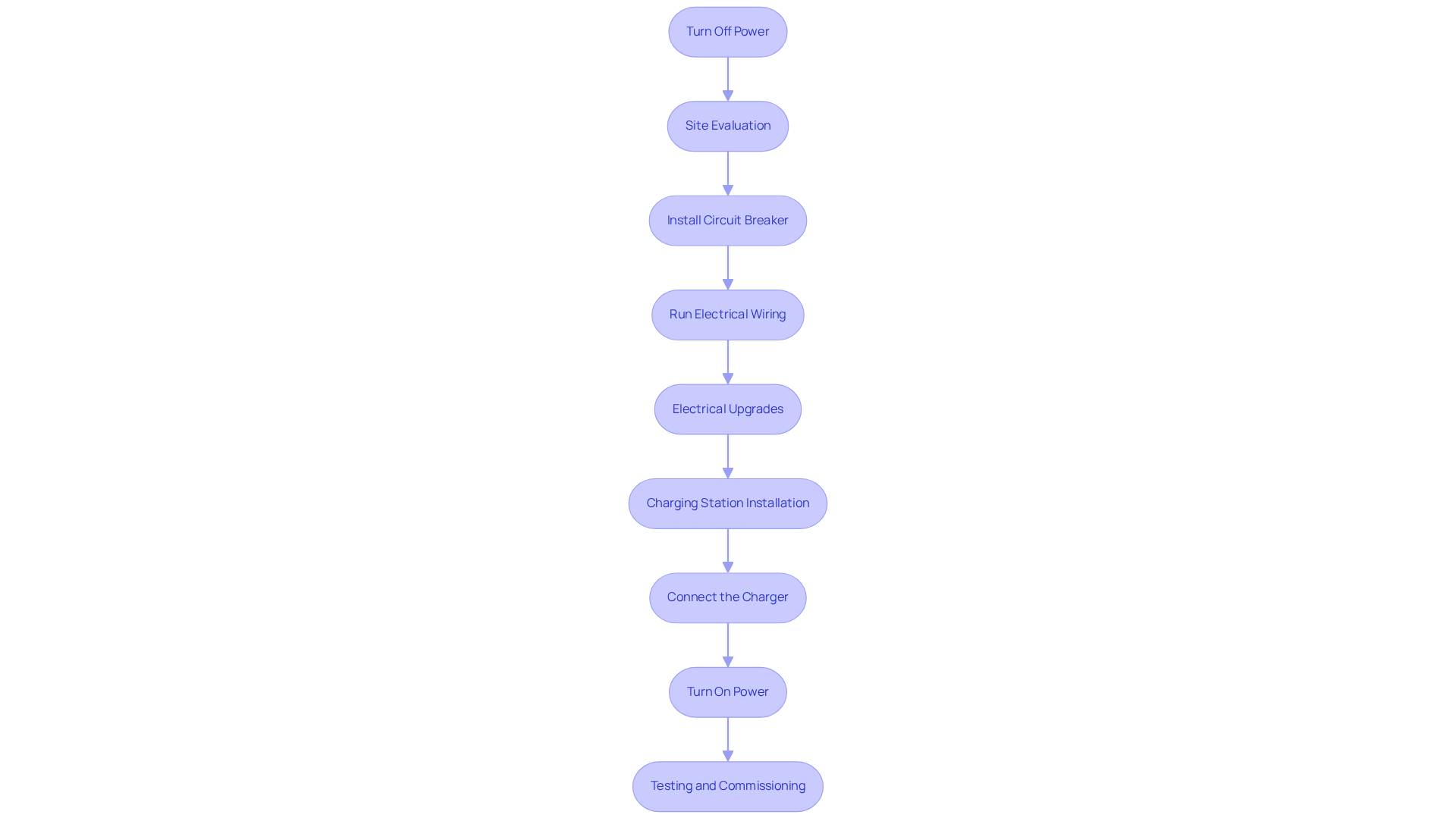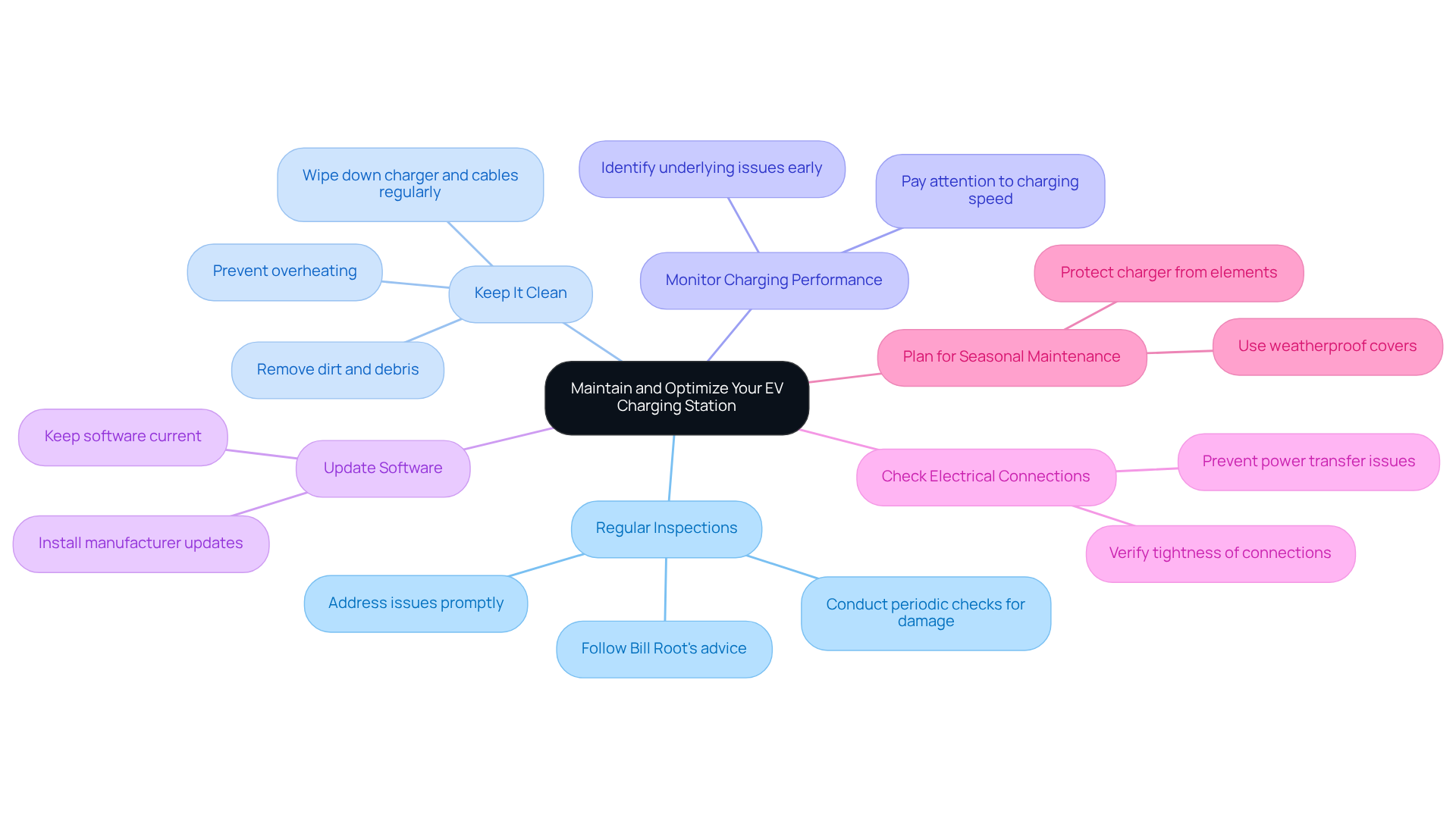Overview
This article serves as a caring companion, guiding you through the comprehensive steps of installing an electric car charging station at home. We understand that navigating energy bills can be daunting, and selecting the right charger type is crucial for your peace of mind. By preparing your electrical system properly, you can ensure a smooth installation process. Furthermore, we detail the necessary preparations and provide maintenance tips that will support optimal performance and safety. Together, we can make informed decisions about your EV charging needs, paving the way for a more sustainable and energy-independent future.
Introduction
The rise of electric vehicles (EVs) has transformed the way individuals approach transportation and energy consumption, prompting many to consider the installation of home charging stations. We understand that navigating the various types of chargers available, from Level 1 to DC Fast Chargers, can feel overwhelming. It’s essential to make an informed choice that aligns with your personal driving habits and home capabilities.
However, the journey to installing an EV charger can seem daunting, filled with questions about:
- Power requirements
- Installation processes
- Maintenance
How can homeowners navigate these complexities to ensure a seamless transition to electric vehicle ownership? Together, we can explore these challenges and find solutions that foster energy independence and sustainability.
Understand Electric Vehicle Charger Types and Benefits
Electric vehicle power sources come in three primary types: Level 1, Level 2, and DC Fast. Each type offers unique benefits tailored to your preferences and power needs, helping you make informed choices that resonate with your lifestyle.
-
Level 1 Charging Stations: Utilizing a standard 120-volt outlet, these stations are the slowest option, providing approximately 4-5 miles of range per hour. While they serve well for overnight power replenishment, they might not meet the daily needs of those with longer commutes. We understand that managing energy costs is essential, and Level 1 may not always be the best fit for your busy schedule.
-
Level 2 Charging Stations: Operating on a 240-volt outlet, Level 2 charging stations are often the preferred choice for electric car charging home installation. They deliver between 10 to 60 miles of range per hour, allowing most electric vehicle (EV) owners to fully charge their vehicles overnight. This significant speed advantage makes them ideal for daily use, ensuring convenience in your routine. Many Level 2 devices also incorporate smart technology, enabling you to monitor and control your power supply through smartphone applications. Moreover, the installation of an electric car charging home installation can enhance your home’s value, as prospective buyers increasingly seek properties with EV charging infrastructure. At Powercore Electric, we offer expert setup services for electric car charging home installation, along with Level 2 devices, solar panels, and battery backups, ensuring your home is equipped with the latest technology and meets safety standards.
-
DC Fast Chargers: Found primarily in commercial settings, DC Fast Chargers can recharge an EV to 80% in about 30 minutes. However, their high installation costs and power requirements may make them impractical for residential use.
By understanding these types of chargers, you can align your choices with your driving habits and home electrical capacity, ensuring optimal performance and convenience. As the electric vehicle market continues to grow, with forecasts of a 22% rise in 2024, investing in a Level 2 device not only meets your current needs but also prepares you for future developments in EV technology. If you have any questions or need guidance on EV charging station installation, or other services like solar panels and battery backups, please don’t hesitate to reach out to Powercore Electric at (916) 699-8778. Together, we can navigate this journey towards energy independence and sustainability.
Prepare Your Home for EV Charger Installation
Before the electric car charging home installation, we understand it’s crucial to prepare your home effectively. Let’s walk through these important steps together:
-
Evaluate Your Power Panel: It’s essential to ascertain if your power panel can accommodate the extra load of an EV charging station. Most Level 2 charging stations require a 240-volt outlet and a dedicated circuit. If your panel is older or has limited capacity (e.g., 100 amps), upgrading to a 200-amp panel is advisable. The average cost for this upgrade typically ranges from $1,300 to $3,000, depending on various factors. Remember, investing in this upgrade can lead to greater energy independence and savings in the long run.
-
Choose the Charging Station Position: Selecting a convenient spot for the device is vital. Ideally, it should be near where you park your EV, ensuring easy access to the power panel. This small decision can make your charging experience much smoother.
-
Consult a Qualified Electrician: Engaging a licensed electrician is a wise step. They can evaluate your home’s electrical system to ensure it meets the criteria for the selected power source and assist with acquiring any necessary permits. Electricians typically charge between $50 and $120 per hour for their services, but their expertise is invaluable in ensuring a safe electric car charging home installation.
-
Plan for Permits: It’s common to feel overwhelmed by local regulations concerning EV power supply setups. Many areas require permits, especially for electrical upgrades, which can cost between $50 and $500. Taking the time to understand these requirements can save you from potential headaches later.
-
Prepare the Setup Location: Clearing the area designated for the power source setup is a proactive step. Ensure sufficient space for the device and any necessary wiring. This preparation will facilitate a smoother installation process, allowing you to enjoy your new charging station with peace of mind.
Together, we can make this transition to sustainable energy as seamless as possible, ensuring you feel supported every step of the way.
Follow the Step-by-Step Installation Process
To successfully install your EV charger at home, let’s take a moment to follow these essential steps together:
-
Turn Off Power: Prioritize your safety by switching off the power at the circuit breaker before starting any wiring tasks. We understand that safety is your top concern.
-
Site Evaluation: Take the time to perform a comprehensive evaluation of your property. This will help identify the optimal site for the charging station while examining any power requirements. It’s crucial to ensure a smooth installation process.
-
Install the Circuit Breaker: If your device requires a dedicated circuit, install a double-pole circuit breaker in your power panel to supply the necessary power. This step is vital for your charger’s efficiency.
-
Run Electrical Wiring: Use the suitable gauge wire—generally 6-gauge for a 50-amp device—to connect the circuit breaker to the device location. Ensure the wiring is secured and protected from potential damage. Your attention to detail here will pay off.
-
Electrical Upgrades (if necessary): Depending on your existing electrical infrastructure, you may need to upgrade or modify it to accommodate the charging station. We’re here to support you through this process.
-
Charging Station Installation: Follow the manufacturer’s guidelines to attach the device to the wall. Ensure it is situated at a convenient height for easy access when connecting your vehicle—ideally at least 750mm above the ground.
-
Connect the Charger: Carefully connect the wiring to the charger according to the installation manual. Double-check that all connections are secure and properly insulated to prevent any electrical hazards. Your diligence here is key to a safe setup.
-
Turn On Power: After confirming that all connections are secure, turn the power back on at the circuit breaker. You’re almost there!
-
Testing and Commissioning: Powercore Electric conducts thorough evaluations to ensure the station operates optimally before transferring it to you. Plug in your EV to test the charger and ensure it is charging your vehicle as expected.
Safety Tips: Always consult a licensed electrician for setup to mitigate risks associated with high voltage. We know that DIY electrical tasks can be daunting; incorrect setups can lead to overheating or electrical fires. Ensure that the power supply is mounted at least 750mm above the ground and situated more than 2 meters from public roads to enhance safety.
Cost and Timeline: The average expense for electric car charging home installation is around £1,000, and the estimated duration for the electric car charging home installation process is approximately 2 to 4 weeks from initial assessment to completion. Following setup, Powercore Electric performs check-ins to verify that everything is operating properly.
For more information about our services, including solar panels and battery backups, or to schedule an installation, please reach out to Powercore Electric at ryan.serrano@powercoreinc.net or call (916) 699-8778. Together, we can work towards a more sustainable future.
Maintain and Optimize Your EV Charging Station
To maintain and optimize your EV charging station, it’s essential to consider some best practices that can make a significant difference in your experience:
-
Regular Inspections: We understand that ensuring the safety of your charging station is a priority. Conducting periodic checks for visible damage, wear, or loose connections is vital. Addressing issues promptly can prevent complications and enhance safety. As Bill Root, a Master Electrician, emphasizes, “Regular inspections are crucial to maintaining the safety and efficiency of your charging station.”
-
Keep It Clean: It’s common to overlook the importance of cleanliness, but regularly wiping down the charger and its cables can help. This practice removes dirt and debris, maintaining good electrical connections and reducing the risk of overheating—essential for optimal performance. Remember, since 80-85% of EV refueling occurs at home, electric car charging home installation and maintenance are vital for homeowners.
-
Monitor Charging Performance: Have you noticed any changes in charging speed? Paying attention to performance can reveal underlying issues that require professional diagnosis. Regular monitoring helps catch problems early, ensuring your device operates efficiently and reliably.
-
Update Software: If your charger is equipped with smart features, keeping the software current is crucial. Manufacturers frequently release updates that enhance performance and security. By ensuring your software is updated, you can prevent inefficiencies and operational issues.
-
Check Electrical Connections: It’s a simple yet effective practice to regularly verify that all electrical connections are tight and secure. Loose connections can lead to ineffective power transfer and safety risks, so ensuring tight connections enhances performance significantly.
-
Plan for Seasonal Maintenance: As the seasons change, especially before winter or extreme weather, it’s important to protect your charger from the elements, particularly if it’s installed outdoors. Utilizing a weatherproof cover can safeguard the unit and prolong its lifespan. With good maintenance, an EV power station can last anywhere from 10 to 15 years, making seasonal care particularly important.
By implementing these practices, you can significantly enhance the performance and longevity of your EV charging station, ensuring a reliable and efficient charging experience. Neglecting maintenance can lead to costly repairs, with commercial charger maintenance averaging $400 per year, while electric car charging home installation options are significantly cheaper. Together, we can ensure your charging station remains in top condition, providing peace of mind and energy independence.
Conclusion
Understanding the intricacies of electric car charging home installation can feel overwhelming, yet it’s essential for any EV owner eager to enhance their driving experience. This guide has provided a comprehensive overview of the different types of chargers, from Level 1 to DC Fast, highlighting the importance of choosing the right one based on your individual needs and home capabilities. As the electric vehicle market continues to rise, making informed decisions about your charging infrastructure not only meets current demands but also positions you for future advancements.
We understand that preparing for installation can be daunting. Key steps, such as evaluating your power panel and consulting a qualified electrician, are crucial to ensure a smooth process. By following the outlined installation steps and adhering to maintenance best practices, you can help keep your charging station functioning efficiently. Regular inspections and software updates can significantly extend the lifespan of your charger, ultimately contributing to a reliable and safe charging experience.
As we collectively shift towards sustainable energy, investing in an electric vehicle charging station is not just about convenience; it’s a meaningful step towards energy independence and environmental responsibility. Embrace this opportunity to enhance your home’s value and functionality while contributing to a greener future. Whether you choose professional installation or a DIY approach, prioritizing safety and efficiency will ensure that your electric car charging home installation is a success. Together, we can work towards a more sustainable lifestyle.
